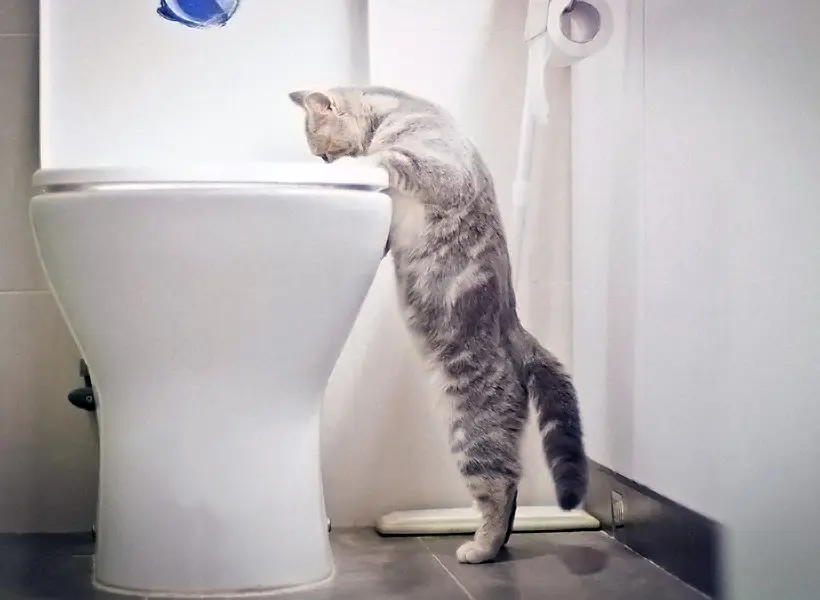The Importance of Not Emptying Animal Waste Down the Toilet
The Importance of Not Emptying Animal Waste Down the Toilet
Blog Article
Just how do you actually feel about Can You Flush Dog and Cat Poo Down the Toilet??

When it pertains to getting rid of waste, particularly animal waste, many people typically consider the convenient choice of flushing it down the toilet. Nonetheless, this relatively simple solution can have major repercussions for the environment and public health. In this post, we'll discover why flushing pet waste down the toilet is a bad idea and provide different approaches for proper disposal.
Introduction
Appropriate waste disposal is essential for maintaining environmental sustainability and public health. While it may appear safe to flush animal waste down the bathroom, it can cause various concerns, both for the atmosphere and human health.
Threats of flushing animal waste
Ecological impact
Purging animal waste presents damaging germs and pathogens into waterways, which can negatively affect marine ecological communities. These pathogens can contaminate water sources and harm aquatic life, interfering with delicate environments.
Public health problems
Pet waste includes harmful microorganisms such as E. coli and Salmonella, which can posture serious wellness risks to human beings. Flushing animal waste down the commode can contaminate water supplies, resulting in the spread of illness and infections.
Alternatives to flushing
As opposed to flushing animal waste down the toilet, there are a number of different disposal approaches that are a lot more eco-friendly and hygienic.
Composting
Composting animal waste is an environmentally friendly means to deal with it. By composting, organic matter is broken down into nutrient-rich soil, which can be check here utilized to feed gardens and plants.
Land fill disposal
Disposing of animal waste in a garbage dump is an additional alternative. While not as environmentally friendly as composting, it is a much safer option to flushing, as it prevents the contamination of water sources.
Family pet garbage disposal systems
There are specific pet dog waste disposal systems available that safely and hygienically throw away animal waste. These systems often make use of enzymes to break down waste and remove odors.
Steps to proper animal garbage disposal
To guarantee appropriate disposal of animal waste, adhere to these steps:
Scooping and landing waste
Regularly scoop and bag animal waste making use of biodegradable bags. This stops waste from polluting the atmosphere.
Making use of assigned waste containers
Dispose of bagged pet waste in marked waste bins, such as compost bins or landfill bins. Prevent flushing it down the commode at all prices.
Cleansing litter boxes and animal locations on a regular basis
Frequently clean can and pet areas to stop the accumulation of waste and microorganisms. Use pet-safe cleaning products to preserve hygiene.
Advantages of proper disposal techniques
Taking on proper disposal approaches for animal waste offers several advantages:
Minimized environmental pollution
Appropriate disposal methods decrease the threat of environmental pollution, securing rivers and ecological communities from contamination
Decreased risk of water contamination.
By preventing flushing pet waste down the bathroom, the risk of water contamination is significantly minimized, securing public health.
Boosted cleanliness and health
Proper disposal approaches advertise better hygiene and hygiene, developing a safer setting for both humans and pets.
Conclusion
To conclude, purging pet waste down the toilet is harmful to the environment and public health. By adopting alternate disposal techniques and complying with proper waste monitoring practices, we can minimize the unfavorable effect of pet waste and contribute to a cleaner, much healthier world.
What To Do With Dog Poo – The Do's And Don'ts Of Disposing Of Faeces
Dog poo bins
Some councils provide dedicated dog waste bins in popular dog-walking areas that can take dog poo that has been bagged but you can legally dispose of dog waste in any public litter bin, as long as it is securely bagged. This also applies to your wheelie bin at home.
Do not flush
Water companies do not recommend flushing dog faeces down the toilet because certain parasites can survive the water processing treatment and are potentially harmful to humans. You should also never consider flushing dog poo that has been bagged down the toilet as the bags will not break down and instead create severe blockages in the sewage system.
In the woods
The Forestry Commission promotes a ‘stick and flick’ method for dealing with waste in the woods. This means finding a stick and using it to flick any poo from off the path so that it is out of the way of other walkers. You could also bury it as long as it is not in an area where there might be livestock.
Livestock
Parasites found in dog poo can be transmitted to livestock if they inadvertently eat infected faeces that has been left on grazing land. This could result in the death of sheep or abortion in cattle so you should always make sure you pick up your dog’s waste in fields where livestock could be present.

I'm very focused on and I'm hoping you enjoyed reading the entire blog entry. Are you aware of another person who is excited by the subject? Be sure promote it. Thanks a lot for taking the time to read it.
Call Report this page